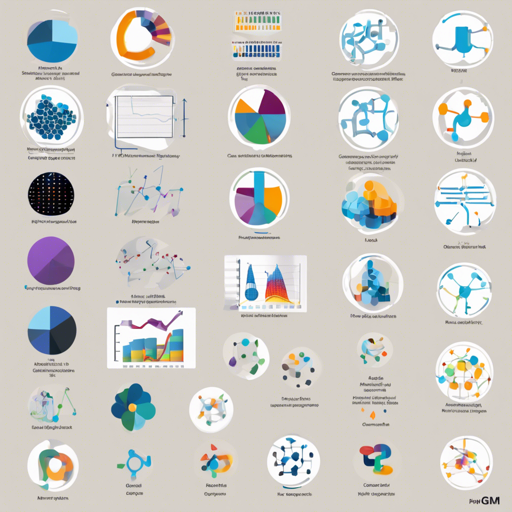Welcome to the world of Generalized Linear Mixed-Effects Models (GLMM) in Python! In this article, we’ll explore various libraries that allow you to perform GLMM tasks effectively. Think of GLMM as a more sophisticated take on regular linear regression, capable of handling complex datasets featuring random effects. Buckle up as we dive into the functionalities of different libraries and understand how they stack up!
Understanding the GLMM Concept
Before we proceed with specific libraries, let’s clarify the GLMM concept with an analogy. Imagine you are a teacher trying to assess the performance of students from different classrooms (groups), each with its unique characteristics, such as teaching style or classroom environment. A simple average might give you some insights but wouldn’t capture the nuances of each classroom. GLMM, therefore, helps you model the fixed effects (like a curriculum) along with random effects (differences across classrooms). This provides a richer and more informative analysis of your data.
Comparing Python Libraries for GLMM
There are several powerful Python libraries at your disposal for fitting GLMM models. Below is a detailed comparison:
- StatsModels: Features extensive statistical models, including GLMM, with a user-friendly interface.
- Theano: A powerful library for numerical computation that enables efficient representation of mathematical expressions, though it requires more code.
- PyMC3: Built on top of Theano, PyMC3 allows Bayesian statistical modeling and provides a convenient interface for GLMM.
- TensorFlow: Although primarily a deep learning library, it can also be used to fit GLMM with specialized configurations.
- Stan & PyStan: Stan and its Python interface allow for flexible modeling, particularly suitable for Bayesian approaches in GLMM.
- Keras: A user-friendly framework primarily used for deep learning but can be adapted for GLMM tasks.
- Edward: A library for probabilistic modeling that offers an easy way to implement GLMM.
Implementing GLMM in Python
When it comes to implementations, here’s a sample code snippet that demonstrates how to define a GLMM using StatsModels:
import statsmodels.api as sm
from statsmodels.formula.api import mixedlm
# Sample data
data = sm.datasets.get_rdataset("sleepstudy").data
model = mixedlm("Reaction ~ Days", data, groups=data["Subject"])
result = model.fit()
print(result.summary())
This code is creating a mixed-effects model that examines the effect of days on reaction times while accounting for the random effect across different subjects. It’s a straightforward approach to fit complex models effectively.
Troubleshooting Common Issues
When working with GLMM in Python, here are some common issues you might encounter along with solutions:
- Installation Errors: If you face issues during library installations, ensure you have the latest version of Python and the libraries. Use
pip install --upgrade library_nameto update. - Model Convergence Issues: Adjusting priors or providing better initial values can help in cases where your model struggles to converge.
- Syntax Errors: Always double-check your data input and formula syntax. Properly structured data frames are essential for successful modeling.
For more insights, updates, or to collaborate on AI development projects, stay connected with fxis.ai.
Next Steps and Advanced Techniques
To further enhance your GLMM implementation in Python, consider these advanced techniques:
- Estimate uncertainty related to model parameters using dropout in Theano and TensorFlow.
- Implement K-Fold Cross Validation and Leave-One-Out (LOO) techniques for assessing model stability.
- Familiarize yourself with WAIC and cross-validation methods in Stan.
At fxis.ai, we believe that such advancements are crucial for the future of AI, as they enable more comprehensive and effective solutions. Our team is continually exploring new methodologies to push the envelope in artificial intelligence, ensuring that our clients benefit from the latest technological innovations.
Conclusion
GLMM is a powerful technique for data analysis in the presence of both fixed and random effects. With libraries like StatsModels, PyMC3, and Stan, you can harness immense potential to model your data comprehensively. Explore the world of GLMM, and you’ll find it to be a valuable tool in your statistical toolkit!

